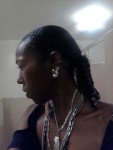
Countries have warred, brought peace, reorganized, and been split. What type of leadership do these countries have? There are several “political ruling structures of the world”, they include:
- Dictatorships,
- Republics,
- Socialists,
- Communists,
- Multi-party (democracy style),
- Nationalists,
- Monarchies, and
- Democracies.
Capitalism and Marxism are like the engines that move the political trains. How the economic systems look.
Capitalism (Small Upper and Lower Class, Large Tax Paying Middle Class)
________________________
Rich/Wealthy/Upper Class
Middle Class
___________________
Poor /Lower Class
Marxist (Moves from Capitalist to Socialist to Communist)
_____________________
Rich Minority_________
Proletariat/
Poor Majority
____________________
Dictatorships
The Ruler has absolute power, and they are not restricted by a constitution, laws or opposition.
Republics
Are a form of democracy: political systems where the supreme power lies in a body of citizens who can elect people to represent them. This includes all or a portion of the population. This political rule is not related to or referring to The Republican Party of the United States of America.
Socialism
Is a political theory advocating state ownership of industry. It includes a cast system, meaning individuals are born into a social class that is based on legacy and bloodline. The cast does not change and is reinforced through religion, educational opportunity, and marriage. Democratic Socialism is the public or common ownership and cooperative management of production and allocation.
Communism
Is a form of Socialism that abolishes private ownership. A Sociopolitical movement a stateless and classless society structured on common ownership, for example: Government Ownership.
Multi-Party Systems
Political systems that have multiple parties and may include communism, which excludes true democracy. An example is India, which has two political parties that are considered communist and large parts of India are considered Marxist.
Nationalism
Is a political emphasizes on promotion of a country.
Monarchy
Is a inherited government autocratic authority. All the political power is absolutely or nominally lodged with an individual.
Democracy
A Government by the people or elected officials. Political governing derived from the people. Stanford’s Universities Model of the four keys for Democracy:
- Free and Fair elections,
- Active participation of the citizens,
- Protecting of Human Rights, and
- The Rule of Law.








No comments:
Post a Comment